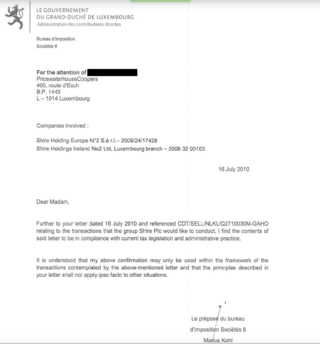| Part of a series on |
| Taxation |
|---|
 |
| An aspect of fiscal policy |
The Common Consolidated Corporate Tax Base (CCCTB) was a proposal for a common tax scheme for the European Union developed by the European Commission and first proposed in March 2011 that provides a single set of rules for how EU corporations calculate EU taxes, and provide the ability to consolidate EU taxes. [1] Corporate tax rates in the EU would have not been changed by the CCCTB, as EU countries would continue to have their own corporate tax rates. [1]
Contents
- Concept
- Administration
- Mechanism
- Scope of the CCCTB group
- Consolidated group
- Formula apportionment
- Three-factor formula
- Advantages and disadvantages
- Compliance costs
- International investment
- Loss compensation and group relief
- Dividend taxation
- Neutrality of legal form
- International profit shifting
- Interest expenses
- Tax deferral
- Transfer pricing
- New tax planning opportunities
- Economic consequences of formula apportionment
- References
- Further reading
- External links
The original proposal stalled, largely due to objections from countries such as Ireland and the UK. [2] In June 2015, the commission announced they will submit a relaunched CCCTB proposal in 2016, featuring two key changes compared to the initial proposal: First it would become mandatory (not voluntary) for corporations to apply the CCCTB regime, and second the "consolidation part" will be postponed for a later follow-up proposal. [3]
In May 2021, the Commission expressed its intention to withdraw the CCCTB proposal, replacing it with a new framework for income taxation for businesses in Europe (Business in Europe: Framework for Income Taxation or BEFIT). [4] However, the Commission work programme for 2022 published in November 2021 did not include the CCCTB as one of the withdrawn proposals. [5] The proposal was finally withdrawn in september of 2023 and replaced with a proposal for a council directive establishing a Framework for Income Taxation. [6] [7]















